In Public Lands Is the Preservation of the Republic
Can America's parks and preserves bring together a divided country?
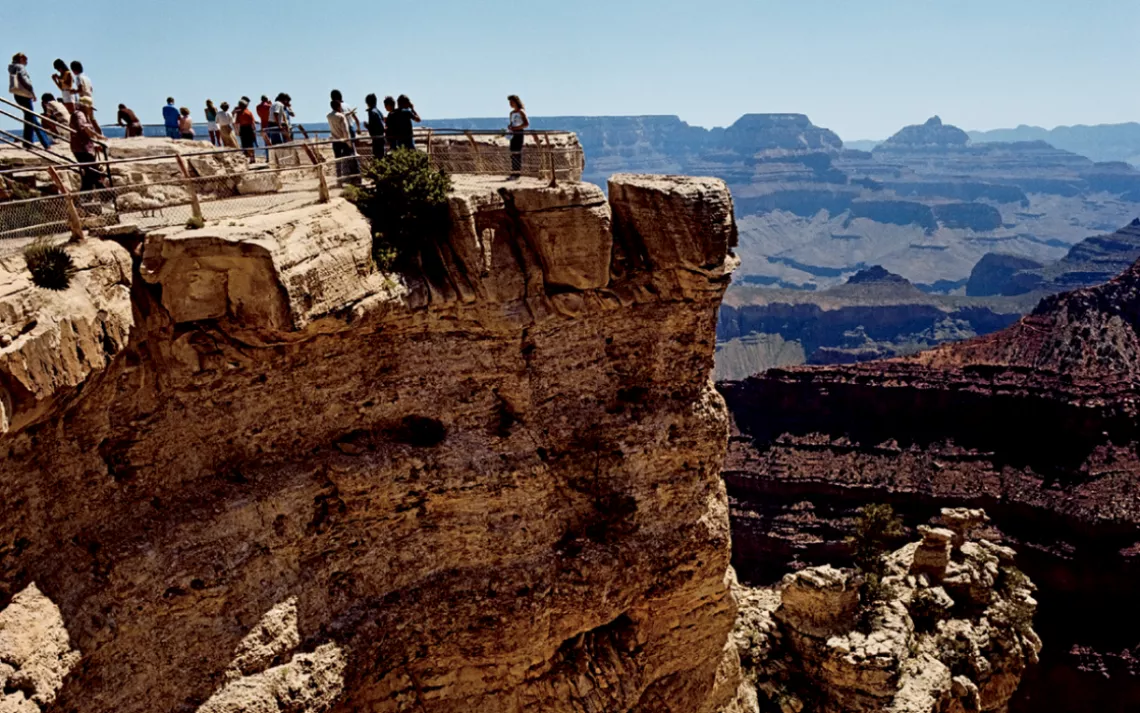
Grand Canyon
ON JUNE 30, 1864, Abraham Lincoln sat at his worktable, with its view of the half-finished Washington Monument and the Potomac River, and went through his daily routine of paperwork and correspondence. There were many issues to occupy the president's mind. The Union army had recently been walloped in the Battle of the Wilderness, Congress was debating a sweeping Reconstruction Act, and he had just dismissed his conniving treasury secretary. Among the minor matters on Lincoln's desk was a bill that Congress had just passed with scant debate, the Yosemite Park Act. The law promised to preserve for common enjoyment "the 'Cleft' or 'Gorge' in the Granite Peak of the Sierra Nevada Mountains … known as the Yosemite Valley" along with the "Mariposa Big Tree Grove" of sequoias. Some 38,000 acres would be "held for public use, resort, and recreation … inalienable for all time." The president put his pen to paper and brought into being the first landscape-scale public park in history.
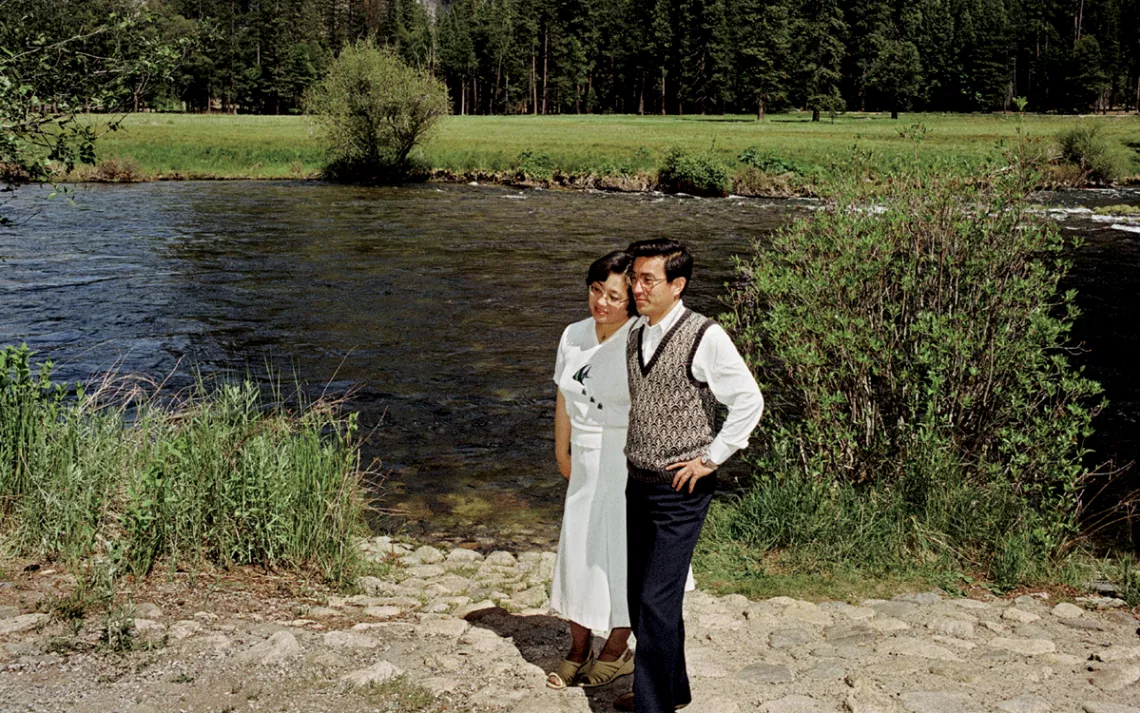
Yosemite National Park
It wasn't until the Civil War was over that anyone understood the significance of what had happened. The first person to figure it out was Frederick Law Olmsted, the architect of New York City's Central Park. Olmsted had been appointed the chair of the Yosemite Commission, which Congress had created to manage the new park. In August 1865, Olmsted and the other commissioners met in Yosemite Valley, where, at a campsite close to the base of Yosemite Falls, he read aloud his draft report about how best to steward the place. The report—most of which was a celebration of the benefits of time in nature—included one of the first arguments of the public lands ideal. Olmsted said that the wealthy had always seized for themselves the best places: "The enjoyment of the choicest natural scenes in the country and the means of recreation connected with them is thus a monopoly, in a very peculiar manner, of a very few, very rich people." It was the duty of a republican government, he argued, to safeguard some natural treasures for the benefit of all: "For the same reason that the water of rivers should be guarded against private appropriation . . . portions of natural scenery may therefore properly [be] guarded and cared for by government . . . [to be] laid open to the use of the people." Olmsted marveled that such an accomplishment had occurred "during one of the darkest hours" in the country's history.
Now, the United States is in another dark hour. America is, once again, a house divided—the nation as wounded and separated against itself as it has been at any time in the past 150 years. Our ideological divisions are mapped onto the land itself, as the young and the progressive are clustered in ethnically diverse cities while conservative whites are increasingly isolated in rural redoubts. We inhabit not just distinct geographies but also seemingly different worlds; we can't even agree on the basic facts of the biology of the human body or the chemistry of the atmosphere. Ideological polarization is at an all-time high. Social trust is at an all-time low. Some of the most sober political commentators have warned that we could be on the verge of another civil war.
Is there anything that can bridge this great divide? Would it be too romantic to hope that this country's vast public lands—the hundreds of millions of acres held inalienable for all time—might be a place where a splintered citizenry could recognize common bonds once again?
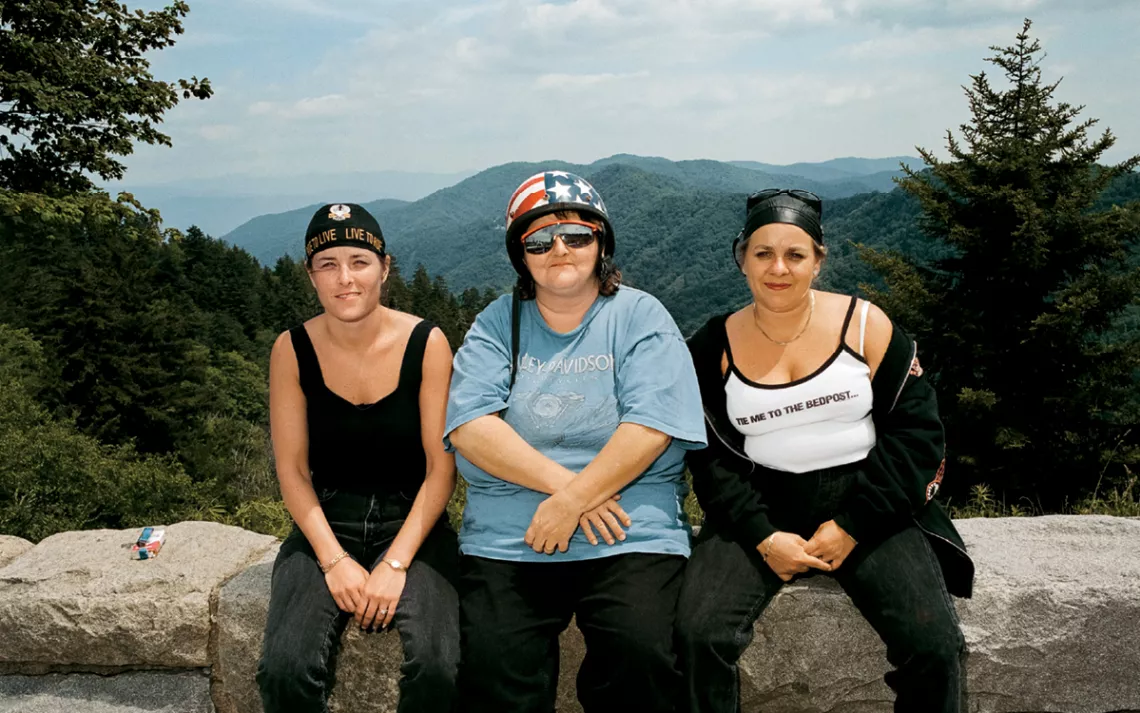
Great Smoky Mountains National Park
If that sounds impossible, consider this: Public lands preservation and recreation are among the few political issues that still enjoy bipartisan support. Last year, Congress passed sweeping legislation that, among other things, made permanent the Land and Water Conservation Fund; established more than 700,000 acres of new federal wilderness; and authorized the Every Kid Outdoors program, which gives fourth graders and their families free admission to national parks. In the Senate, the bill passed 92 to 8; in the House, the yeas outnumbered the nays 6 to 1. Senator Lisa Murkowski, a Republican from Alaska, called the legislation a "very, very collaborative process . . . [that] offered something for nearly everyone."
Such bipartisan backing for public lands is a reflection of popular will. For the past decade, Colorado College has conducted an annual poll of voters' opinions in Western states—home to much of the country's public lands and often ground zero for disputes about those lands. Every year, the survey has revealed supermajority levels of support for public lands protection. Two-thirds of voters want Congress to prioritize public lands preservation ahead of oil and gas drilling, while almost three-quarters support full funding for the Land and Water Conservation Fund. Across party lines, seven in 10 Western voters support the conservation goal of protecting 30 percent of America's land and ocean areas by 2030.
The transpartisan passion for parks and preserves has deep roots in US politics. When the lands bill passed in Congress last year, Representative Raúl Grijalva, an Arizona Democrat, hailed it as an "old-school green deal," a nod to the long history of cooperation on lands protection. During the 20th century, for every Republican conservationist, such as President Teddy Roosevelt—who dramatically expanded parks and national monuments—there was a Democratic one, like his cousin President Franklin Delano Roosevelt. Even as the federal lands privatization movement known as the Sagebrush Rebellion took hold in the 1980s, the expansion of the wilderness system enjoyed support from ideological opponents as disparate as Barry Goldwater, an archconservative, and Mo Udall, a rock-ribbed liberal.
It's not that the bipartisan embrace of public lands is new; it's that, in this age of intense polarization, it's unique. Even as the peoples of the United States disagree about almost everything, we still manage to agree about the importance of guarding some portion of wild nature. Public lands preservation is an island of consensus in a sea of acrimony—an outcropping from which we might be able to see that some shared values are as enduring as the divisions we fixate upon.
We are challenged, then, with the task of acknowledging and better understanding the binding ties we have overlooked for too long. What's at the bedrock of the public lands consensus?
Maybe it's that the desire to preserve this country's natural heritage transcends partisanship. Or maybe it's that the passion for wild nature simply precedes partisanship. A love for the land is an elemental emotion, an instinctual desire that comes before party labels and tribal identities. Awe and wonder bridge ideological divides. When we enter public lands, we go there not as consumers, or even as citizens, but first and foremost as mere humans.
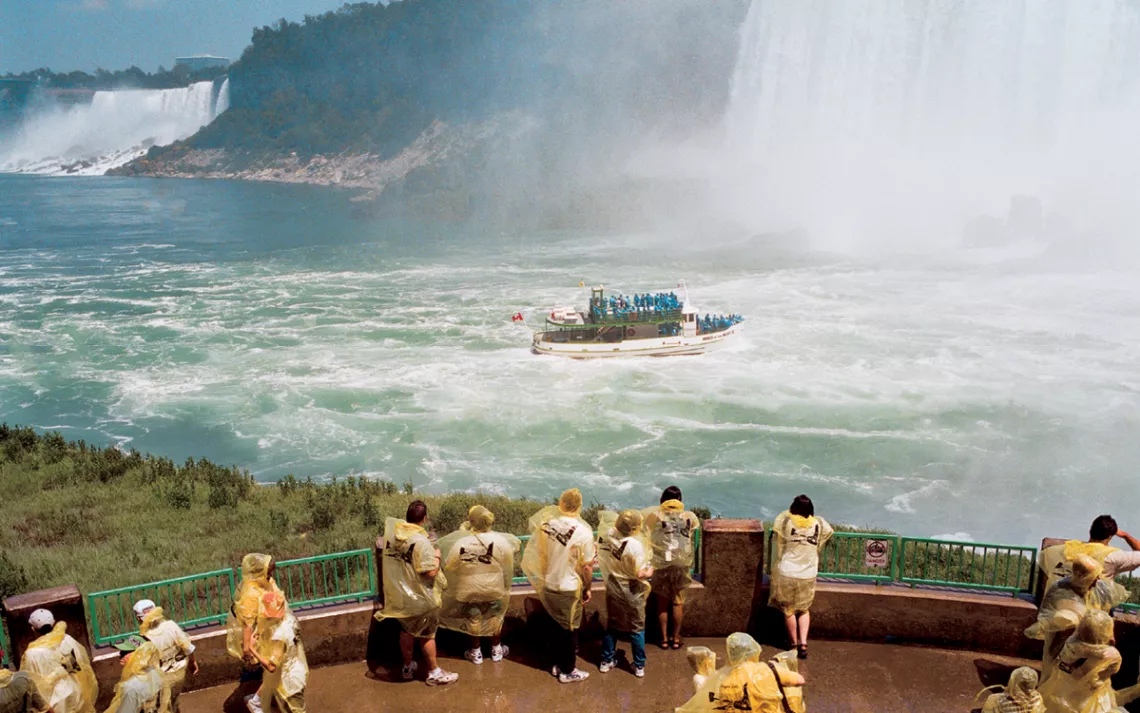
Niagara Falls
In this country, we're blessed with a multitude of wide, open spaces where everybody can (in theory) fulfill basic human instincts. Some 836 million acres—nearly one in three acres across the territory of the United States—are owned by the public. This includes national forests, national parks, national wildlife refuges, national recreation areas, wild and scenic rivers, state parks, regional open-space areas, county parks, and city preserves. In such places, one can (with the proper permits and abiding by applicable laws) walk with family, hike alone, swim, run, play with a dog, go fishing, go hunting, sing church songs around a campfire, pass a flask of whiskey around a campfire, watch the stars, get engaged, get married, pan for gold, or just sit still and marvel at the industriousness of woodpeckers. To use any of America's public lands—whether to pray in or to play in, as John Muir once wrote—is not simply to enjoy nature as a retreat but to engage with nature as a kind of civic exercise. The spaciousness of our public lands infuses them with an ecumenical spirit. They can, if we want it and will it, bind citizens together with an almost magnetic force.
It might just be that—to bend Thoreau's famous line about wildness—in public lands is the preservation of the republic.
ANY HONEST ATTEMPT to tell a story about America's public lands must reckon with the fact that there are many different stories to be told—and not all of them are happy. A lamentable history complicates the public lands ideal. And it's a virtuous complexity, one that adds depth to how we think about our collective terrains.
Every American acre is stolen land, much of it once worked with stolen labor. The genocide of Native Americans and the enslavement of African Americans act like an acid against the ideal of public lands. The long trail of abuses tangles the all-too-tidy narratives many Americans like to tell themselves about "the best idea we ever had," as Wallace Stegner described the national parks. Dispossessions call into question the claim that our public lands are collectively owned.
For the most part, the theft of Indigenous lands was not driven by a desire to establish parks and reserves. Old-fashioned avarice—a desire to seize the lands' natural wealth of gold, silver, timber, water, and topsoil—propelled the murder and terror during the European settlement of America. When James Savage led the Mariposa Battalion into Yosemite Valley in the spring of 1851 and burned the lodges and food caches of the Ahwahneechee, the goal was to secure the mountains for miners and settlers, not to preserve a temple of nature.
In some places, though, the establishment of public lands led to the outright expulsion of the peoples who had lived there for generations. Glacier National Park is one example. At the turn of the 20th century, park rangers there aggressively enforced a ban against hunting and fishing within the park even as the Blackfeet Nation complained that the ban violated its treaty rights. In 1915, a Blackfeet delegation traveled to Washington, DC, to meet with Stephen Mather, the founding director of the National Park Service, to protest. The Blackfeet ambassadors asked that, at the very least, the park maintain Indigenous place-names, since the whites used "foolish names of no meaning whatsoever." Mather accepted the request about place-names—then went ahead and used white names on the official maps anyway.
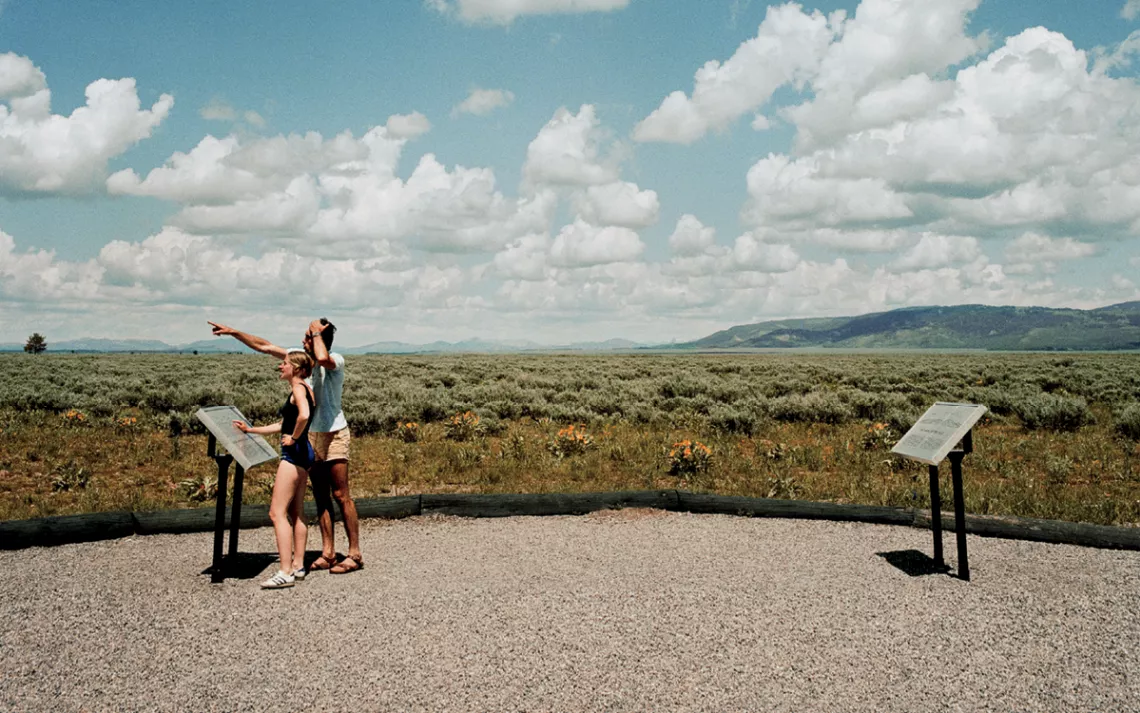
Grand Teton National Park
Such insults and usurpations weren't limited to the Native American experience. For much of the 20th century, Jim Crow laws prevented African Americans from exercising the liberty to enjoy public parks like their white neighbors did. While that legal system of exclusion has been dismantled, its legacy lives on; many people of color still feel unwelcome on public lands. It shouldn't be any surprise, then, that the inspirational story of public lands doesn't ring true for everyone. "The history of African Americans in this country complicates their ability and/or desire to write of a rapturous idealized connection to the natural world," Camille T. Dungy, a Black eco-poet, has written. If public lands exert a certain magnetic force on the American imagination, it must be true that they repel as much as they bind. "Landscape ties us together and holds us apart," Jedediah Britton-Purdy, a white environmental thinker and legal scholar, writes in his book This Land Is Our Land. "The ground that people stand on memorializes what divides them."
Acknowledging those divisions is one way to deepen the often-superficial story of public lands. In doing so, we recognize that the public lands vision is aspirational in the same way that the Declaration of Independence and the US Constitution are aspirational. Public lands are always in a process of being perfected.
For those who have been dispossessed or excluded, the wild nature preserved in public lands can provide—and in fact has provided—an especially valuable succor. Just as a passion for freedom burns hottest in those who have been oppressed, a hunger for time in nature may be most intense for those who have been kept from entering freely into nature. "It is not beyond the oppressed to lean hard on natural beauty as an uplifting beam," J. Drew Lanham, a Black ornithologist and author, has written. "Survival draws on inspiration. Sweet sounds and beauty are no less worthy of notice because one is in chains—perhaps they are worthier because of the chains."
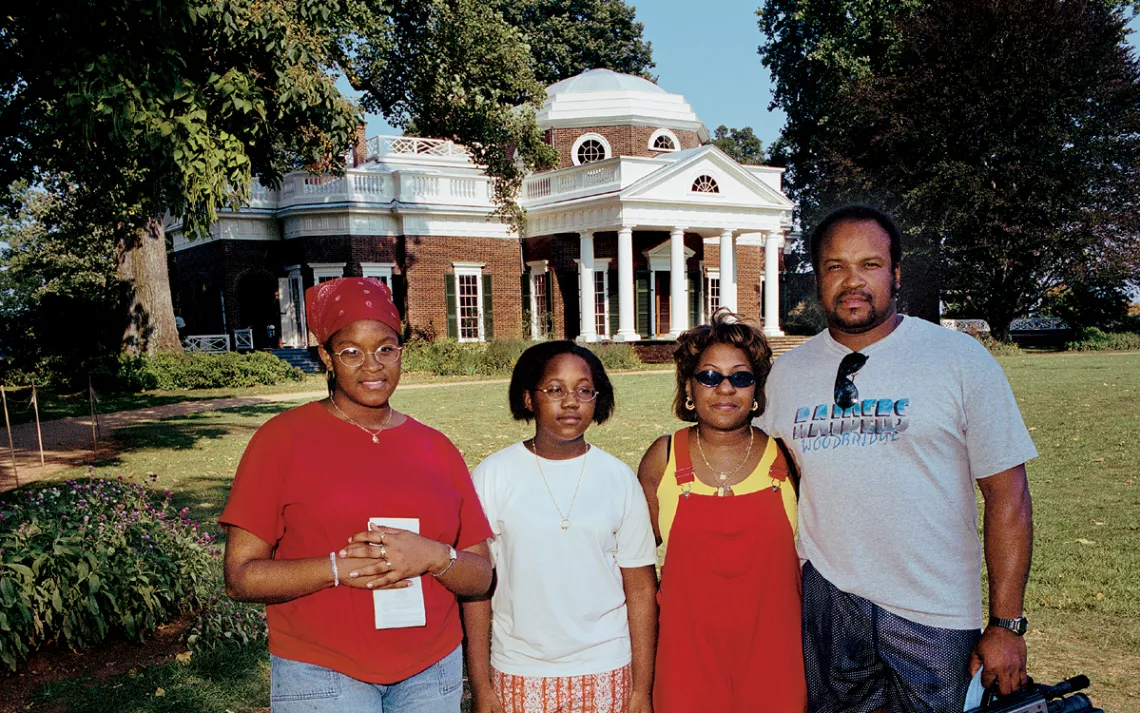
Thomas Jefferson's Monticello
Lanham grew up on a farm in Edgefield County, South Carolina, surrounded by the Sumter National Forest. In his book The Home Place: Memoirs of a Colored Man's Love Affair With Nature, he concludes that open spaces can yet be for people of color the kind of retreat that they have long been for white Americans. "The land, in spite of its history, still holds hope for making good on the promise we thought it could, especially if we can reconnect to it."
TO HOPE THAT THE LAND can heal open wounds is, in its way, audacious. It requires real faith to imagine that our public lands can bring together Black, white, and brown—Republicans, Democrats, and independents too. What can possibly sustain such hope and faith?
The answer lies in our innate biophilia. Public lands belong to all of us, and we belong, in some fashion, to the land. It seems a self-evident truth that we are each endowed with an affinity for wild nature. Recent science confirms that folk wisdom. We crave time outdoors. We want to be able to feel wind and water, sun on our face, soil beneath our feet. We want to glimpse wild creatures. Without those connections, we succumb more easily to illness and anxiety. This primal urge for time in nature can transcend the tribalism that has come to define America.
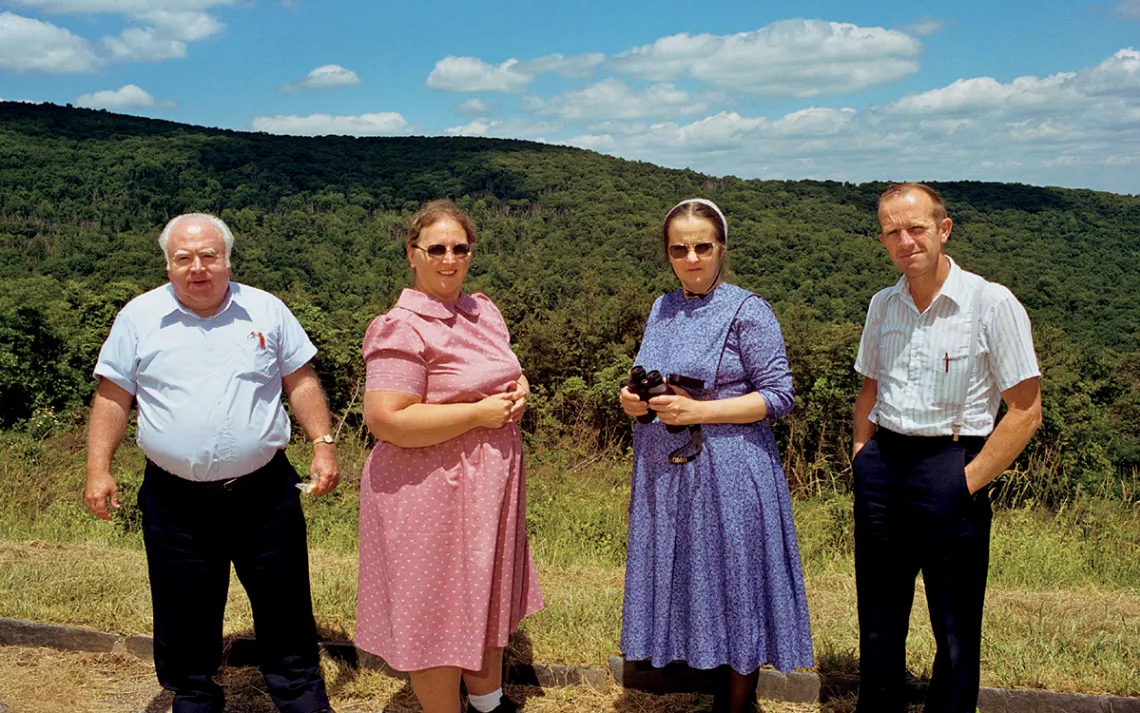
Shenandoah National Park
In public lands, we can learn (or relearn) important civic values, lessons earned through age-old trials and rewards. Inter-dependence and mutual obligation, first of all, since the vast tenancy in common works only if we trust one another—the belayer's grip on the rope, as it were. Sacrifice, as well, the fortitude to bear collective burdens, whether in the form of cold hands, wet feet, fatigue, or carrying more than our fair share. Solidarity, too, because wild nature is nothing if not a great equalizer. In the woods and the deserts, we are all equal before forces greater than ourselves.
Perhaps most important, public lands instruct in the value of respecting differences. We may all be endowed with a love of nature, but that passion takes many forms. Public lands must accommodate multiple uses because there are multiple publics whose wishes point in all directions. For the faithful, public lands can deliver wonders of revelation; for the scientist, a living laboratory for discovery; for the hunter, a place from which to take physical sustenance; for most of us, nothing more and nothing less than a playground for body and spirit. Such differences don't have to fester into divisions. The duck hunter and the birdwatcher may have their own ideas about the highest value of a wetland. Yet both know that without public protection, there might not be a wetland at all.
Of course, not everyone views public lands as transcendent. Biophilia may be part of our nature, but a conservation ethic has to be nurtured. If three-quarters of Americans believe public lands preservation should come before corporate and private interests, there's a solid one-quarter of Americans who disagree, in large part because they doubt the very notion of a common good. The infamous Bundy clan and its fellow travelers like to fiddle with their pocket Constitutions and claim, guns drawn, that public lands are illegal. Beyond the Bundys, there's a network of think tanks and front groups that have spent the past 40 years constructing intellectual arguments for privatizing federal lands and a cadre of elected officials eager to fulfill that agenda.
For the privatizers, there is no collective interest—only self-interest. In this worldview, the marketplace's logic of resource maximization trumps all other desires. This brand of thinking runs deep in American culture. The primacy of property is what drives a great many legislators to maintain a steady assault on the budget of the National Park Service while seeking to hand over federal lands to extractive industries. On public lands, one can also (with the proper permits and abiding by applicable laws) clearcut a forest, blow a hole in a mountain, store toxic sludge in huge ponds, block a stream, fill a watershed, dam a river, overstock cattle, and build fences of barbed wire.
This collision between the ideal of common ownership and the ideology of individualism means that public lands—even as they hold a promise of unification—are also contested ground. Those who wish to privatize public lands see such conflict as a deficiency. They are suspicious of democratic politics in almost any form and view debates over resource management as little more than "public bickering over entitlement and influence peddling," in the words of one aspirational privatizer. Yet the contest of worldviews is another virtue of America's public lands: It forces us to engage in the hurly-burly of democracy. Teddy Roosevelt believed that disagreements over how to manage public lands were "essential democracy at work," and this is still true today. Public lands prompt the public to ask, "What's the highest use for the common good?"
Some citizens argue that we should extract a portion of our meat, leather, wool, lumber and paper, metals, and energy from the collective trust. Many others prioritize guarding public lands above taking from them. It's a fact that backpackers, birdwatchers, hikers, anglers, and climbers greatly outnumber lumberjacks, miners, roughnecks, and cowboys. By far, the top use of US public lands is for recreation.
A simpler word is play. Public lands' highest purpose may be that they offer us opportunities to play, because in those open spaces we exercise that most idiosyncratic American right: the pursuit of happiness. "The chance to find a pasqueflower is a right as inalienable as free speech," Aldo Leopold wrote in A Sand County Almanac. The Fourth of July picnic, the fishing trip, the afternoon hike through the woods, and the morning beach stroll are all fulfillments of happiness. Such simple pleasures make America's public lands into something like a vast reservoir of national goodwill and joy. Maybe that joy can join us in union once more, through the alchemy of what Lincoln called "the mystic chords of memory."
IN MY LIFE, I've been privileged to visit public lands across the United States, from the Arctic National Wildlife Refuge in Alaska to the Okefenokee National Wildlife Refuge in Florida and Georgia. Few places hold as strong a claim on my heart as does a scrap of wildlands in the San Francisco Bay Area called Briones Regional Park. Compared with some of California's awe-inspiring national parks, Briones isn't much: a scant 6,300 acres of California savanna and oak woodland wedged amid suburban sprawl. But it's big enough for wildness to persist there and close enough to home that I've come to know the place in all moods and in every season.
On late-afternoon hikes, I've caught coyotes yapping to one another across the hillsides. On evening treks, I've heard owls calling and frog song loud enough to make my ears ring. Flocks of turkeys make their home there, as do deer and bobcats and cougars. From the ridgetops, I can spot, to the west, Mt. Tamalpais on the edge of the Pacific Ocean and, to the east, Mt. Diablo guarding the flanks of the Central Valley. Once, on a gin-clear winter day, the line of the white-topped Sierra Nevada was clean and crisp more than a hundred miles away. For me, Briones has been a place of celebration as well as solace.
It has also taught me to appreciate the civic values of public lands. Upwards of a million people live within a relatively short drive of the park, and from the ridges where I go to watch meadowlarks and western bluebirds, I can also spot the chain of oil refineries necklacing the bay shoreline and the glass-and-steel towers of Walnut Creek lined up like so many dominoes. I can get lost in solitude if I make enough effort, but a hike along a Briones trail is often a crowded affair (especially in the age of the pandemic, with so many people desperate for time outside). Like any public land, the park is open to many different uses—and not all of them are my ideal.
I guess if it were up to me alone, I'd get rid of the cows that graze those hills; their belches assault the atmosphere, and their excrement assaults my nose. I'd probably ban the dogs too, knowing how they can stress some bird species—since birding is often the reason I go there. Hell, I might even prohibit the mountain bikers, if for no other reason than my own peculiar, personal aesthetics. Thankfully, it isn't up to me alone. So I always make sure to leave the cattle gates as I find them, to show patience toward even the most annoying dogs, and to step aside to let the mountain bikers pass. I try to keep in mind the guiding principle of those share-the-trail signs found at trailheads: yield.
Above all, it seems to me, America's public lands teach the etiquette of sharing. They instruct us in the manners of coexistence, cooperation, and consideration toward others. Over time, that etiquette of sharing may become something deeper, something akin to an ethic of compromise. And within that ethic, we might just discover a measure of humility. Such humility can remind us that even though we may find the culture and politics of others to be incomprehensible, their desire to find happiness in the natural world is much the same as our own. They are like us.
All of this is a lot to ask from our public lands. America's parks and preserves alone can't heal the United States' wounds or lift the burdens of resentment and suspicion. But if you've ever shared a campfire with a perfect stranger and in that elemental environment forged a fleeting friendship, then you know—as I do—that public lands can serve as a place where we might recognize one another's humanity. We may yet discover that public lands are the ultimate common ground, part of a geography of reconciliation.
This article appeared in the July/August 2020 edition with the headline "Across the Great Divide."
This article was funded by the Sierra Club's Outdoors for All campaign and Military Outdoors program.
 The Magazine of The Sierra Club
The Magazine of The Sierra Club



